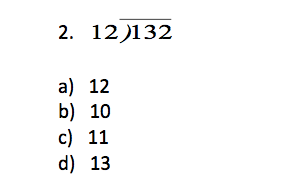The TerraNova Test serves as an achievement test that is administered to students in grades K-12. The exam strives to assess higher-order thinking as well as other academic skills that the child has been taught in school. The test measures specific skill criteria such as achievement in reading, language arts, mathematics, science, social studies, vocabulary and spelling. The test is formatted as a multiple choice test, however 1st graders and above may be given free-response questions.
As the child moves up in grade level the challenging nature of the test increases. This is especially apparent on the language section which encompasses spelling, punctuation and sentence completion. Specifically, when it comes to punctuation, any embedded errors in this section become much more subtle then in lower level tests. As a result, it is recommended that students build on both their skill level and ability to focus. Additionally, on the reading comprehension section, students are expected to read closely, focus on context clues and remain attuned to the main plot points of the story. By focusing on these three skills, the student will find it easier when it comes to answering questions. Below are several TerraNova sample questions that are intended for the fifth grade level. Each practice question will reflect a specific subtest that your child will come across.
1.) Language: Capitalization
Parent say to your child: “For this next group of questions, read the first 3 lines to yourself. You will notice that there may be a mistake in capitalization. If there is no mistake, mark the circle in front of the line that contains the capitalization mistake. If there is not a mistake, fill in the circle that reads “no errors.
- Dear aunt Christy,
- thank you for letting us stay
- at your condo on the beach.
- no errors
2.) Mathematics
Parents say to your child: Please tell your child to read the question and circle the best answer.


3.) Vocabulary
Parent say to your child: “This practice test is words and what they mean. Look a the phrase and the underlined word. Then ark the word in the list below that has practically the same meaning as the underlined word.”
Don’t deprive him.
- release
- indulge
- endow
- constrain
4.) Reading Comprehension
Parent say to your child: “This practice test is words and what they mean. Look a the phrase and the underlined word. Then ark the word in the list below that has practically the same meaning as the underlined word.”
1
Is There an App for That?
2 Have you noticed how everyone is interested in “apps” lately? App, short
3 for application, is the latest way for web developers to present games, utilities,
4 entertainment, news, social networking, sports, and much more through
5 computers and mobile devices.
6 There are apps for a lot of things. All you need is a computer, cell phone with
7 the ability to connect to the Internet, or a similar type of device. Apps must be
8 downloaded form the Internet, but not all of them require an Internet
9 connection to work. Some apps are free; some cost as little as $0.99.
10 You might be wondering about what kind of applications you could find and
11 use. One example is a dictionary. There are a lot of dictionary apps. Most of them
12 are free. If you have a mobile device and are reading a book, a dictionary app
13 might be handy if you find a word you don’t know because you can look it up
14 quickly. There are reading apps that allow you to read books right on your iPod
15 or computer. Sports apps help fans keep up on the latest news about their
16 favorite teams.
17 Some schools let kids use their cell pones or iPods in the classroom if there
18 are not enough computers for research. By using search apps or subject specific
19 apps, students can complete assignments even if no computers are available.
20 Of course, the most popular types of apps are games. you can play anything
21 from a word game to a game where you throw irritated birds at stacks of wood
22 and pigs. A lot of games have free versions that have limited options so you can
23 try them before buying the app. This is a good way to see if you like the way an
24 app functions or if you like the game before spending money on it.
25 Even kids have created apps! Two brothers made their math lessons into an
26 iPhone app in 2009. They were only 9 and 11 years old! That’s pretty young, but
27 there are websites and books available to teach people how to make apps step-
28 by-step. there’s even a “Tech Camp” in San Diego that includes app building for
29 kids. It isn’t a super easy process, but with enough determination and the right
30 tools, an app can be built. In other word, you can use apps AND you can make
31 them.
32 If you could build your own app, what would it be? Would it be a new kind of
33 game? Would it be an app that works as a homework helper? What about an app
34 about sports? Maybe you’d make an app that teaches a lesson. Or you might
35 choose to create an app that makes music. If you aren’t ready to take on app
36 building just yet, remember, there are hundred of thousands of apps that can be
37 bought or downloaded for free. Like the Apple Company says, “There’s an app
38 for that.”
Some apps offer
- Free versions to try
- coupons
- Money back
- Free magazines
5.) Mathematics
Parents: Please tell your child to read the question and circle the best answer.
Answer Key
- Option 1 (Aunt)
- C.
- Option 4
- A.
- a.
